Looking for the best vlogging camera you can buy? You've come to the right place. Whether you’re ready to launch a YouTube channel or keen to start live-streaming for your Instagram audience, our buying guide features the top cameras to suit every type of vlogger. Each model recommended below has been tested to make sure it fits the bill.
What’s the best vlogging camera you can buy right now? There's no single best answer for everyone, but right now our top pick is the Sony ZV-1. The beginner-friendly 1-inch compact is unbeatable for pocket-friendly flexibility, offering class-leading autofocus and a versatile 24-70mm lens. Color profiles and a built-in ND filter make it the ideal small camera for most vloggers who are just starting out.
That said, if you’re looking for a vlogging camera with a larger sensor or support for interchangeable lenses, we suggest alternatives like the Fujifilm X-S10. It’s a fantastically capable mirrorless all-rounder, with a great APS-C sensor, brilliant handling and in-body image stabilization, which should help reduce shake if you’re recording handheld 4K video.
If live-streaming is more your genre, we think the Panasonic GH5 Mark II is a great option. It’s not a big leap over the GH5 before it, but it offers a wide range of shooting options and, more importably, introduces support for streaming 1080/60p video straight to the likes of YouTube and Facebook.
Whatever kind of vlogging camera you’re shopping for, our guide features all of the best vlogging options you can buy today. We’ve covered the latest releases, as well as the top older models which continue to offer excellent value for money. And we keep this list regularly updated as new cameras arrive and prices change, so you’re always sure to find the best option for your budget.
How to pick the best vlogging camera for you
From premium webcams to mirrorless models, the best vlogging cameras come in a range of shapes and sizes. The features you need will vary depending on what and how you like to shoot.
If you’re a solo filmmaker, for example, you’ll probably want a camera with an articulating touchscreen which makes it much easier to frame shots when working by yourself. Equally, if a lot of your content involves speaking to the camera, you’ll need an external microphone input to ensure you capture top-notch audio for your audience. Reliable face-tracking autofocus will also mean that your subject stays sharp, even if they move within the frame.
A lot of vloggers like to walk and talk at the same time. If this is your style, you should consider a camera with in-body image stabilization. This will help to smooth out any shaky motion caused by your footsteps and make footage much more watchable. Some cameras go a step further with an integrated gimbal which counteracts motion on several axes to stay level, like the DJI Pocket 2.
Almost all of the best vlogging cameras can now shoot in 4K resolution as standard. But it’s important to look beyond resolution alone. High frame rates of 120fps and above will allow you to shoot stunning slow-motion footage, for example. And if post-processing is part of your workflow, 10-bit color depth will give you greater flexibility in the editing room.

Best vlogging cameras in 2021:
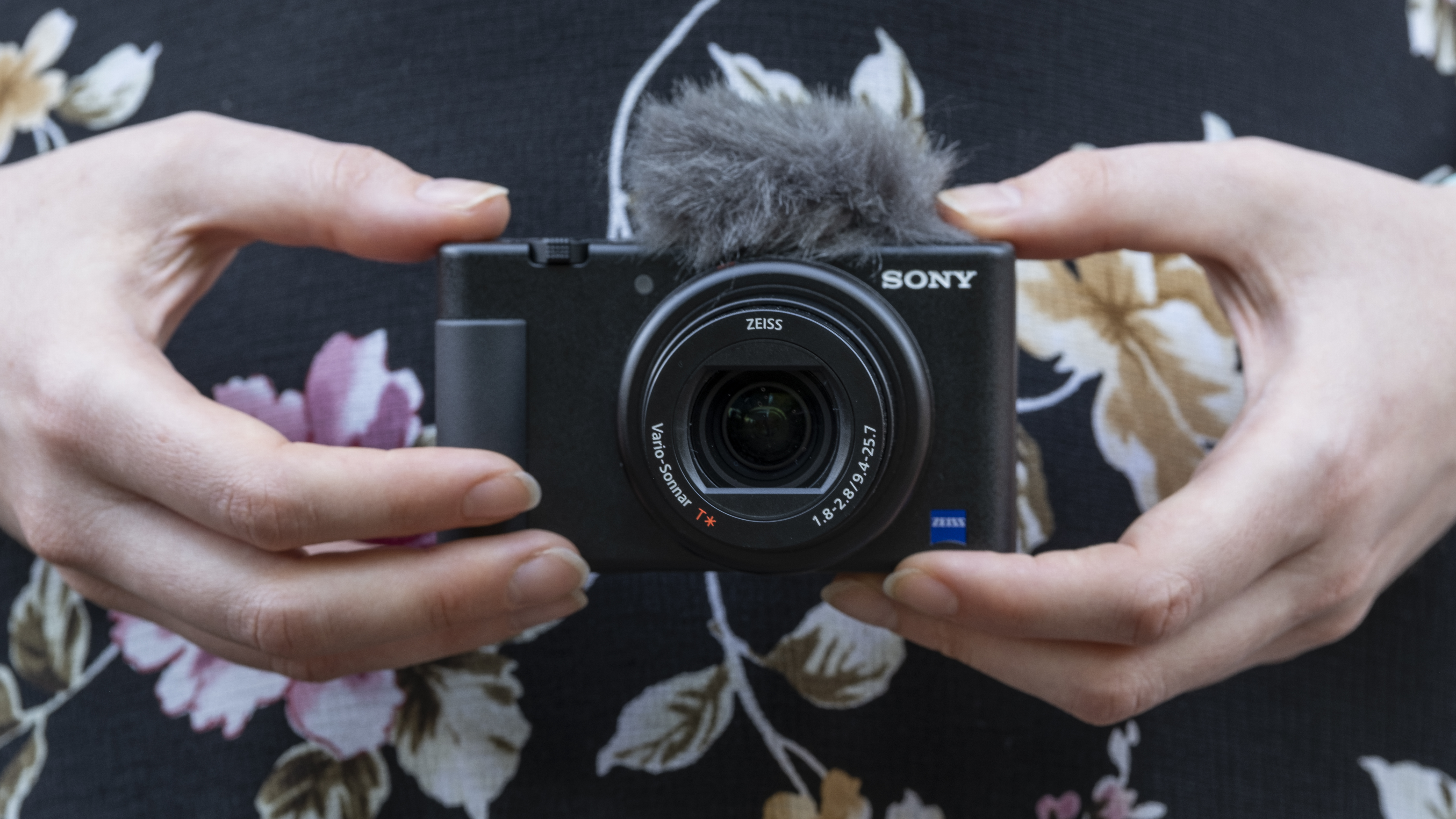
For a long time, the Canon G7 X Mark III was our favorite compact vlogging camera, but it's just been knocked off its perch by the excellent Sony ZV-1. By combining all of the best bits of Sony's RX100 series (for example, the RX100 VII's microphone port and autofocus, plus the RX100 V's bright 24-70mm f/1.8-2.8 lens) the ZV-1 really nails what most people want from a small vlogging camera.
Sony's latest Real-time tracking and Eye AF are the best around and the ZV-1 also has a huge amount of depth for a compact camera, including a built-in ND filter and profiles like S-Log2 for those who want to embrace color grading. We still think the Olympus OM-D E-M5 Mark III's stabilization and image quality are better still, but you won't find a finer pocket vlogging camera than the Sony ZV-1.
- Read our in-depth Sony ZV-1 review

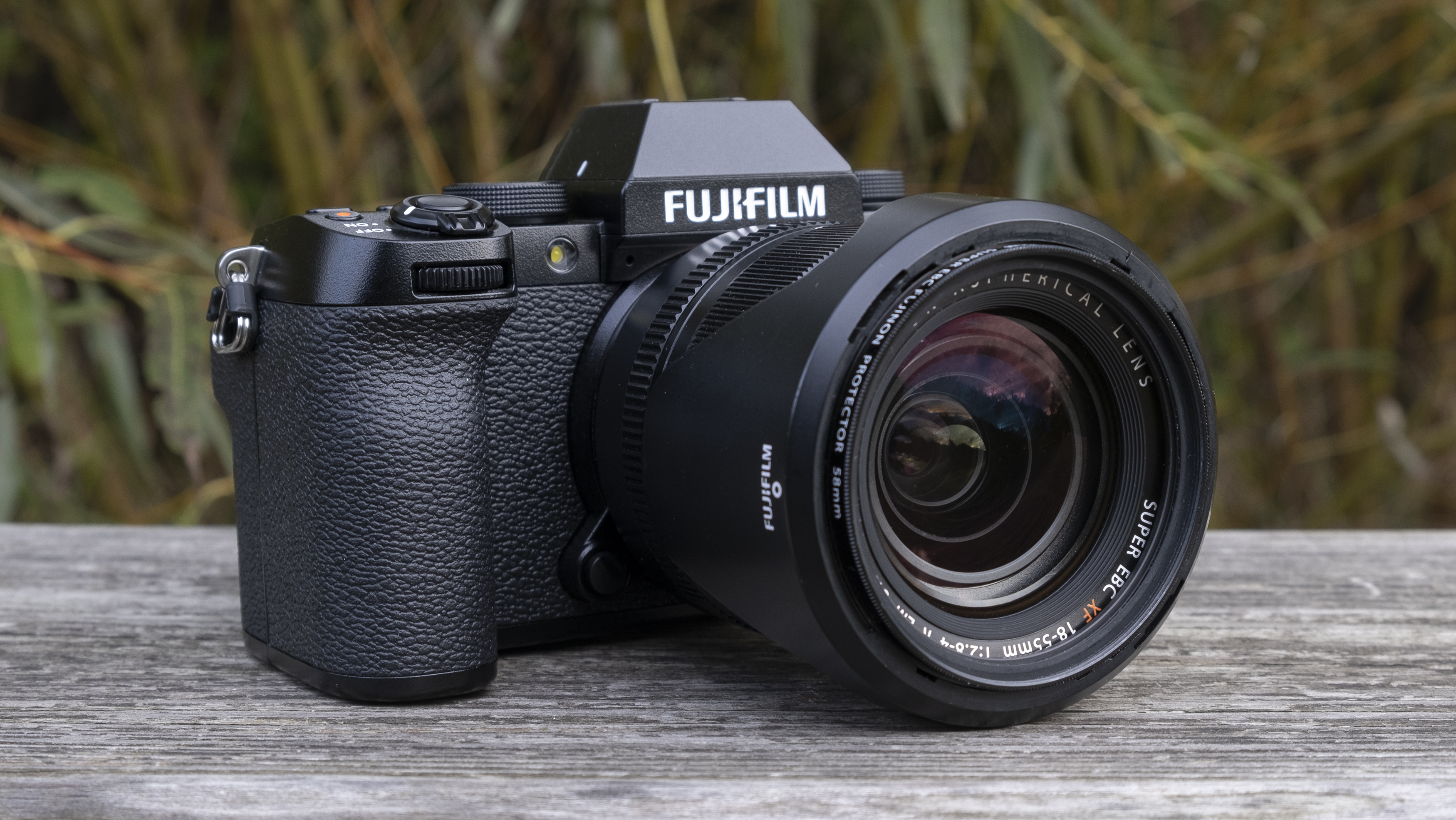
Arguably the best all-round mirrorless camera at this price point, the Fujifilm X-S10 is adept at lots of different types of shooting – including vlogging. It's not the cheapest or smallest option in this guide (the Sony ZV-1 below is a better compact option), but in terms of quality and bang-for-your-buck, it's our current top pick for video creators. Pair it with an XC15-45mm kit lens, and you have a superb vlogging setup.
Inside the X-S10 is the tried-and-tested combination of a 26.1MP X-Trans CMOS 4 sensor and X-Processor 4, which we’ve already seen in the Fujifilm X-T4. It shoots uncropped 4K/30p video, has in-body image stabilization (IBIS) to smooth out handheld jitters, and a vari-angle screen that flips round to face you. The X-S10 is also packed with other useful features, such as Full HD recording at 240p for a 10x slow motion effect, F-Log recording, and the option to output 4:2:2 10-bit video, too.
On top of all of that you’ve also got some fine retro styling and a great, comfortable grip, which makes it a great hybrid option for shooting stills, too. Considering all of the features you get, it's also available at a pretty wallet-friendly price. But be warned: its wide range of great X-series lenses may prove hard to resist.
- Read our in-depth Fujifilm X-S10 review

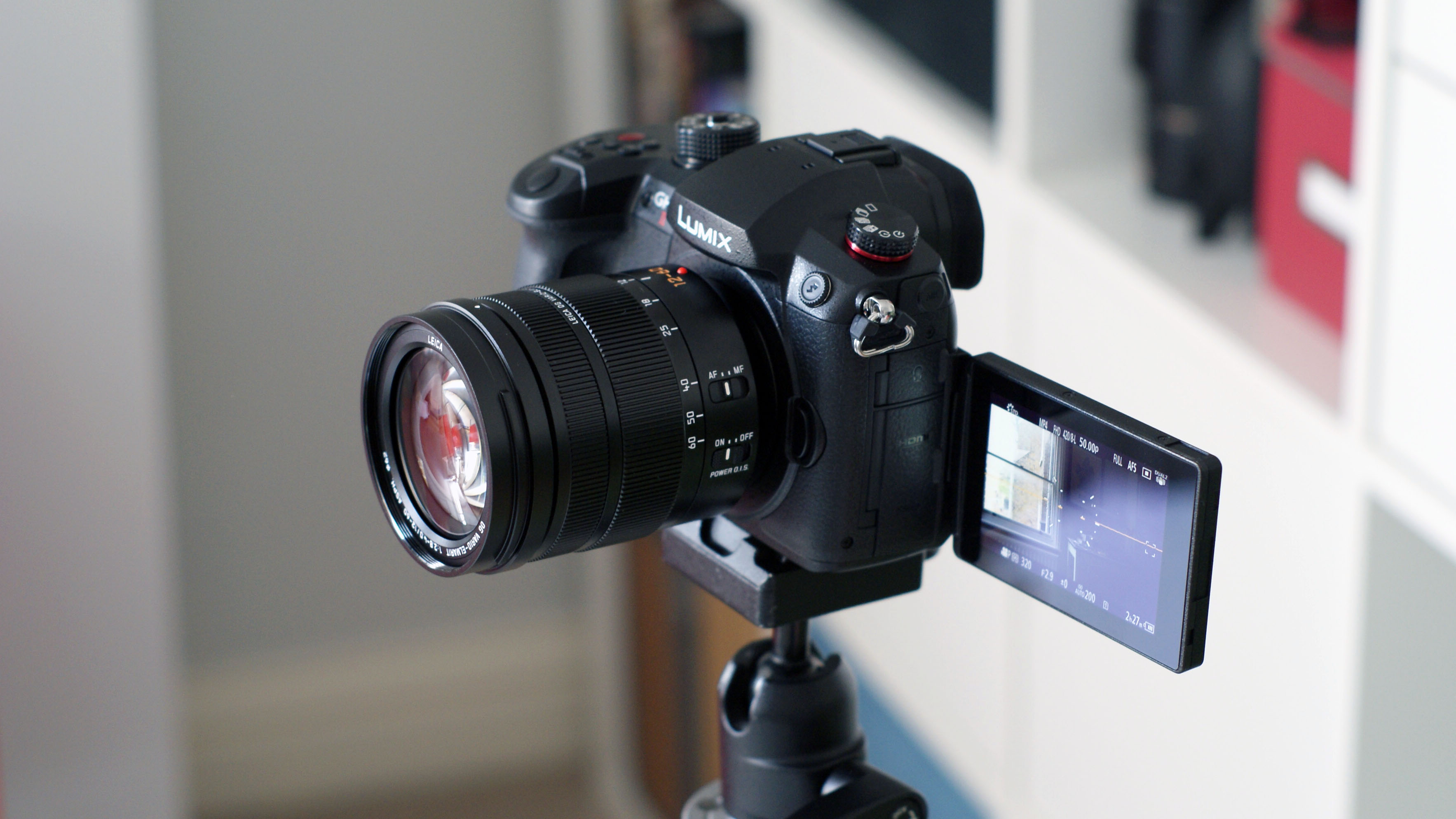
The original Panasonic GH5 was a legendary camera thanks to its combination of class-leading 4K video specs and relatively small, affordable body with IBIS. The GH5 Mark II doesn't make big improvements to this existing formula, but it does add one particularly useful trick: wireless live streaming.
With the Panasonic GH6 already on the horizon and likely to be the true upgrade to the GH5 from a video quality standpoint, live streaming is really the focus of the GH5 Mark II – and it works well. Streaming to YouTube and Facebook is pretty simple thanks to the built-in options inside the Lumix Sync app, but you can also stream to others like Twitch thanks to its support for the standard RTMP/RTMPS protocol.
Streaming quality is limited to 1080/60p and the GH5 Mark II's autofocus still lags behind the best, but it's perfectly serviceable in most situations and the camera's other specs (in-body image stabilization, an articulating screen, plus a huge array of video shooting options) make it one of the best vlogging cameras around, particularly if you fancy dabbling with the live element.
- Read our in-depth Panasonic GH5 Mark II review

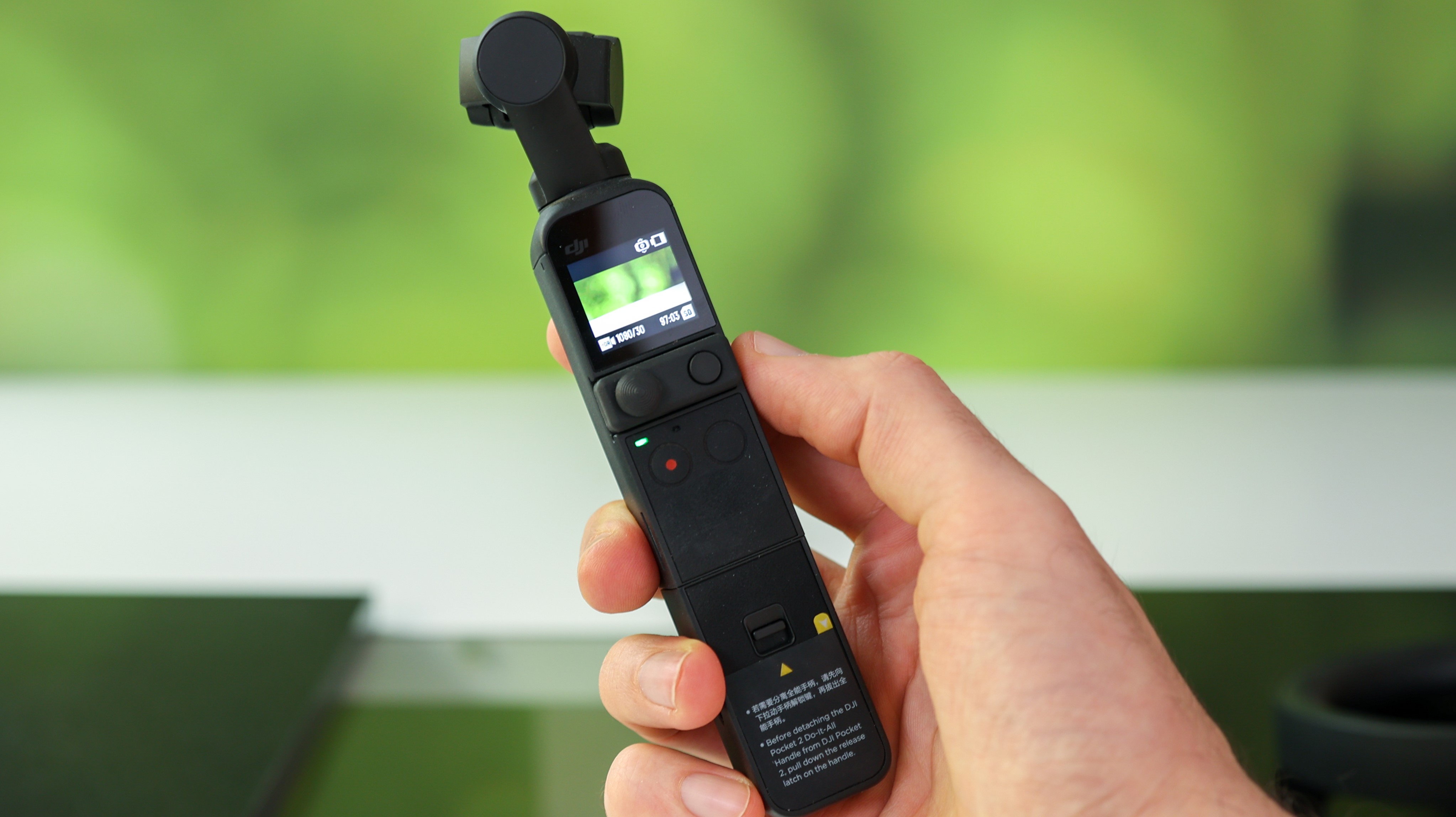
We were big fans of the original DJI Osmo Pocket, but this sequel fixes a lot of its limitations and makes it the best compact option around for solo filmmakers. The Sony ZV-1 (above) trumps it for outright video quality, but if you tend to shoot a lot of walk-and-talk style clips to camera, then the Pocket 2's combination of a three-axis gimbal and solid face-tracking could make it more appealing.
Compared to the Osmo Pocket (which remains on sale as a more affordable alternative), the DJI Pocket 2 brings a new larger sensor, a brighter lens, improved microphones and wider field of view, which means you don't have to hold it out at arm's length when talking to camera.
Plonk it down on a tripod base or surface, and it'll turn to keep you in shot as you walk around in front of it. Despite that larger sensor, the Pocket 2 still isn't the ideal camera for low light situations or high contrast scenes, but it's a very nice upgrade on using your phone in a gimbal and the improved four-mic audio setup means you get some very decent sound quality to match.
- Read our in-depth DJI Pocket 2 review

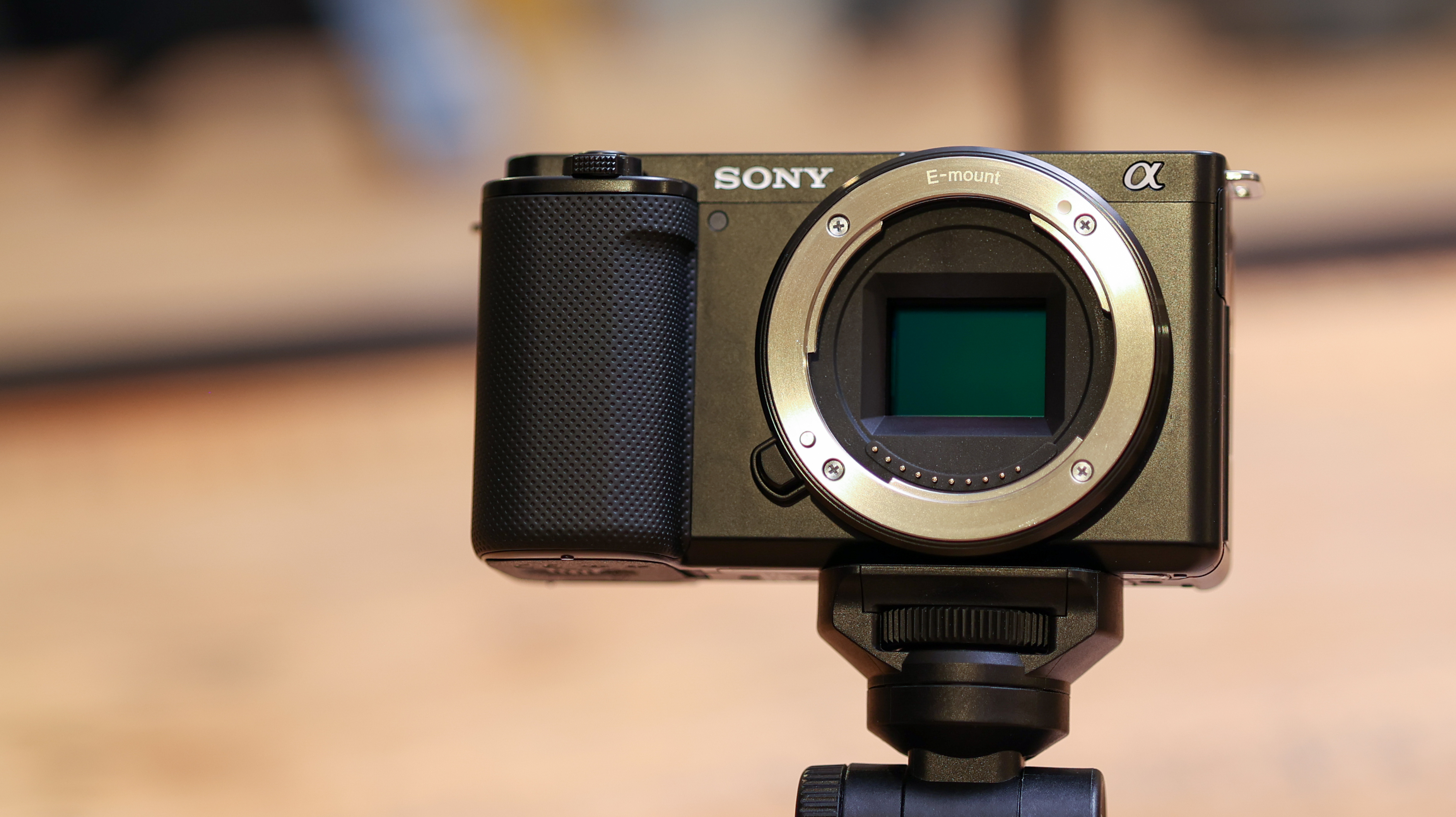
Looking for a compact vlogging camera, but one with more flexibility than the Sony ZV-1 or DJI Pocket 2? The ZV-E10 could well be your best option. It's based on the relatively old hardware of the Sony A6100, hence the relatively affordable price tag, but brings lots of video-focused features that make it a good alternative to the ZV-1 if you fancy changing lenses and focal lengths for different effects.
The ZV-E10 is based on the same 24.2MP APS-C CMOS sensor as many of its A6000-series stablemates, which is both good and bad news. It's a large sensor that produces impressive video and photo quality for the price, particularly in low light when compared to its smaller sensor rivals. But it does have rolling shutter issues (that 'jello' effect) when you pan quickly, and the camera does also lack a viewfinder, a 4K/60p mode and in-body image stabilization.
Still, there is an electronic SteadyShot to smooth handheld jitters, along with great software features like 'Product Showcase' that we saw on the ZV-1. The ZV-E10's autofocus is also best-in-class at this price, so if you don't mind those aforementioned limitations and want to flexibility of interchangeable lenses, it's a great new option for vloggers.
- Read our in-depth Sony ZV-E10 review

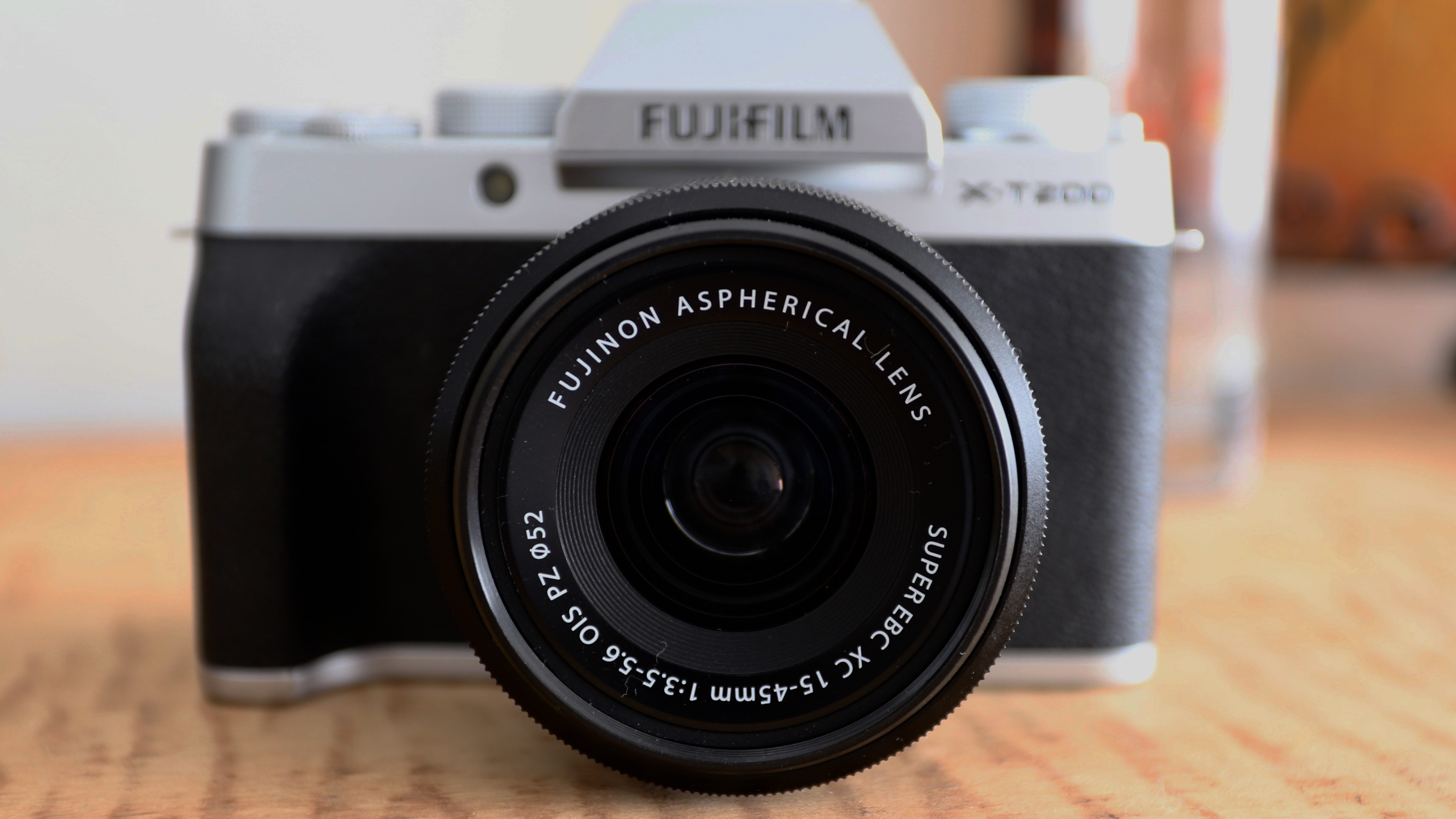
Fujifilm’s X-T200 is an attractive entry-level camera with plenty to offer for vloggers. Featuring the familiar retro styling of the X-series, the X-T200 is equipped with a 24.2MP APS-C sensor that captures uncropped 4K video at 30p by ‘downsampling’ from 6K footage. The results are impressively detailed and notably more dynamic than the camera’s 1080p efforts. It's a slight shame that digital image stabilization only works in Full HD, but use a lens with built-in IS and you won't miss it too much.
While the X-T200 can capture 1080p footage at up to 120fps, the new HDR video mode (which combines multiple frames to enhance dynamic range) is only offered up to 60fps. Despite these small quibbles, the X-T200 is brilliant to shoot with. The 3.5-inch vari-angle touchscreen is fantastically sharp and makes framing a joy, while a 3.5mm mini stereo input and USB-C port add welcome versatility. It’s a shame that subject tracking can’t be used for video, but the X-T200 is a versatile and capable vlogging option all the same and one of the best at its price.
- Read our in-depth Fujifilm X-T200 review

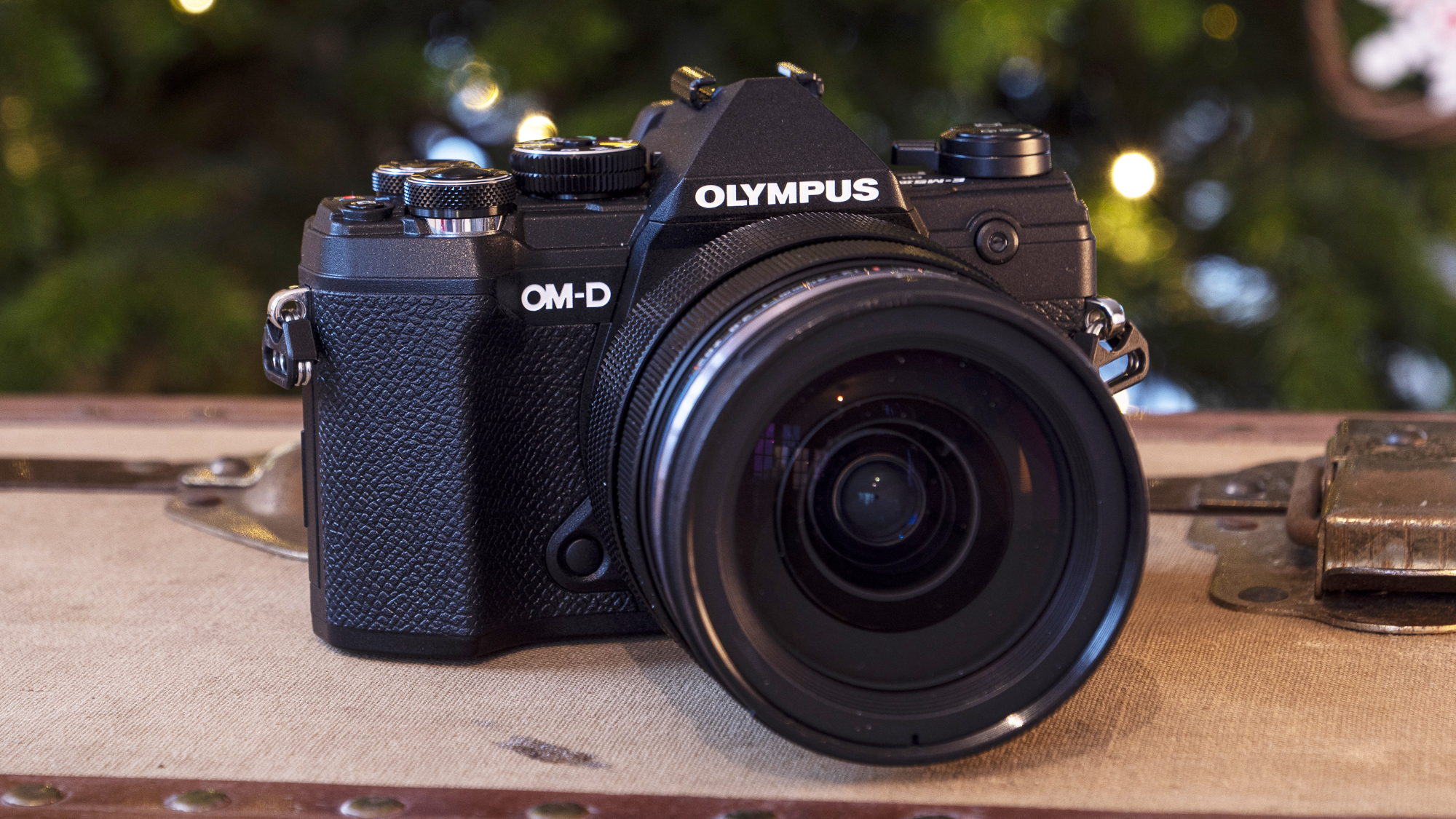
Don’t be fooled by the retro shell: the Olympus OM-D E-M5 Mark III is a top-spec vlogging camera, offering the ultimate combo of solid image quality, lightweight build and a comprehensive feature set. The hand-grip could be bigger, but the polycarbonate construction shaves 50g off the weight of its metal-bodied predecessor, making it a camera you can comfortably hold all day. The 20.4MP Four Thirds sensor – shared with the pro-grade E-M1 Mark II – delivers reliable continuous tracking thanks to on-chip phase detection autofocus, while handheld footage is usually super smooth, courtesy of class-leading image stabilization.
The option to shoot Cinema 4K at 24fps and a 237Mbps bit-rate is seriously impressive, while regular 4K footage at 30fps is routinely excellent, with lovely color rendition and good detail. Full HD at up to 120fps completes a comprehensive video offering. The vari-angle touchscreen makes framing a cinch, too, while the healthy Olympus lens catalogue opens up plenty of creative avenues. There’s no headphone jack, which will irk some videographers, but that sought-after external microphone port is there. Sure, it’s a bit expensive, but as a complete vlogging package it’s tough to beat.
- Read our in-depth Olympus OM-D E-M5 Mark III review

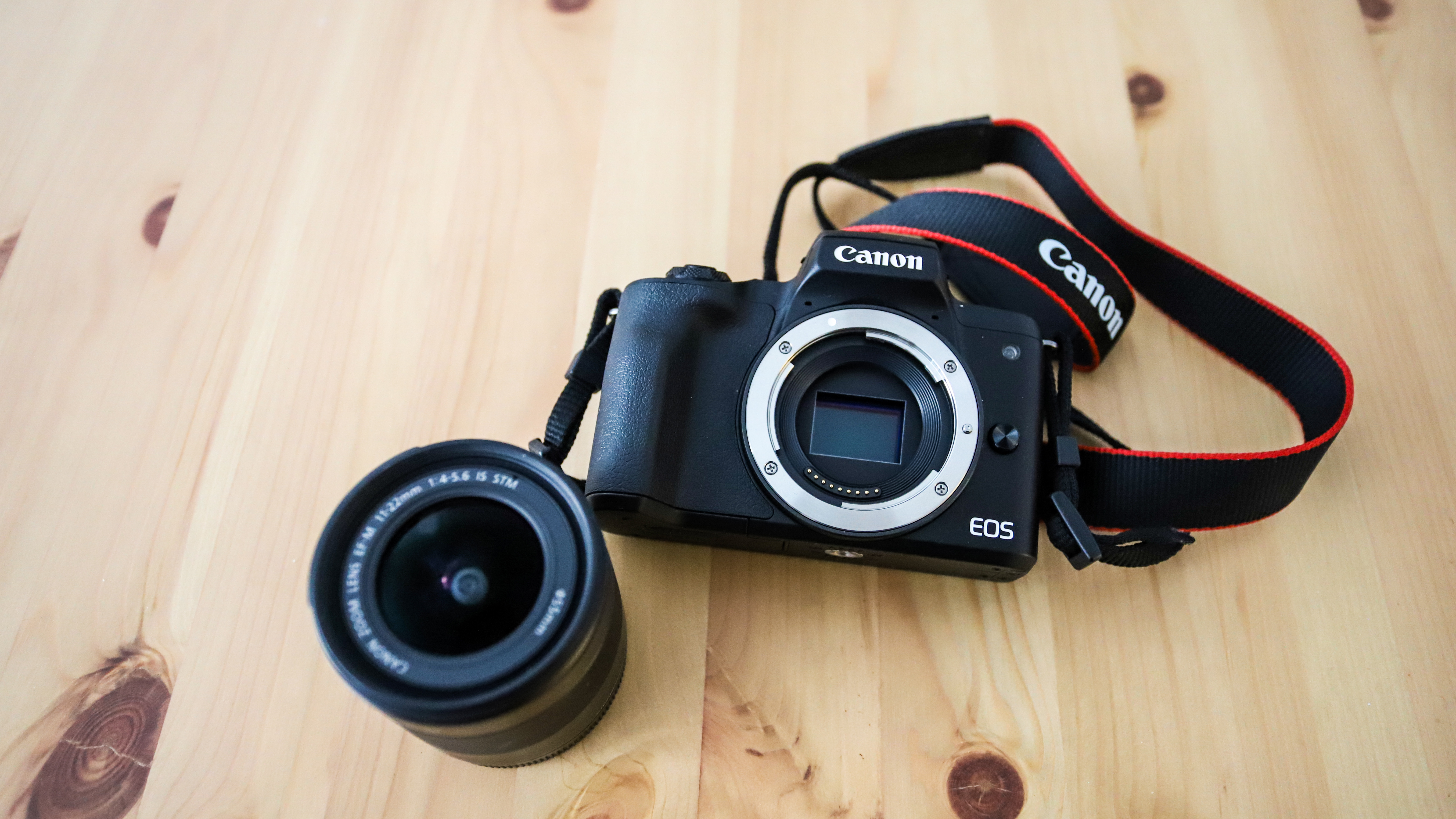
It's a shame Canon didn't make the EOS M50 Mark II a bigger update to its EOS M50 predecessor, but it remains a good 1080p video option for anyone who's starting out on their vlogging journey. The main updates it brings are Eye AF for stills and video, which works well for an entry-level model, and the option of shooting vertical video for the likes of Instagram.
The main drawback of the EOS M50 Mark II is its heavy 1.56x crop on 4K video, which it inherits from its predecessor. This crop increases to a massive 1.75x if you turn on digital image stabilization – so if shooting 4K video is your main priority, we'd recommend going for the Canon EOS M6 Mark II instead (see further down). But if you're happy with shooting 1080p video, then the M50 Mark II remains a fine option, thanks to its combination of a large 24.1MP APS-C CMOS sensor, vari-angle touchscreen, microphone input and that compact form factor.
- Read our in-depth Canon EOS M50 Mark II review

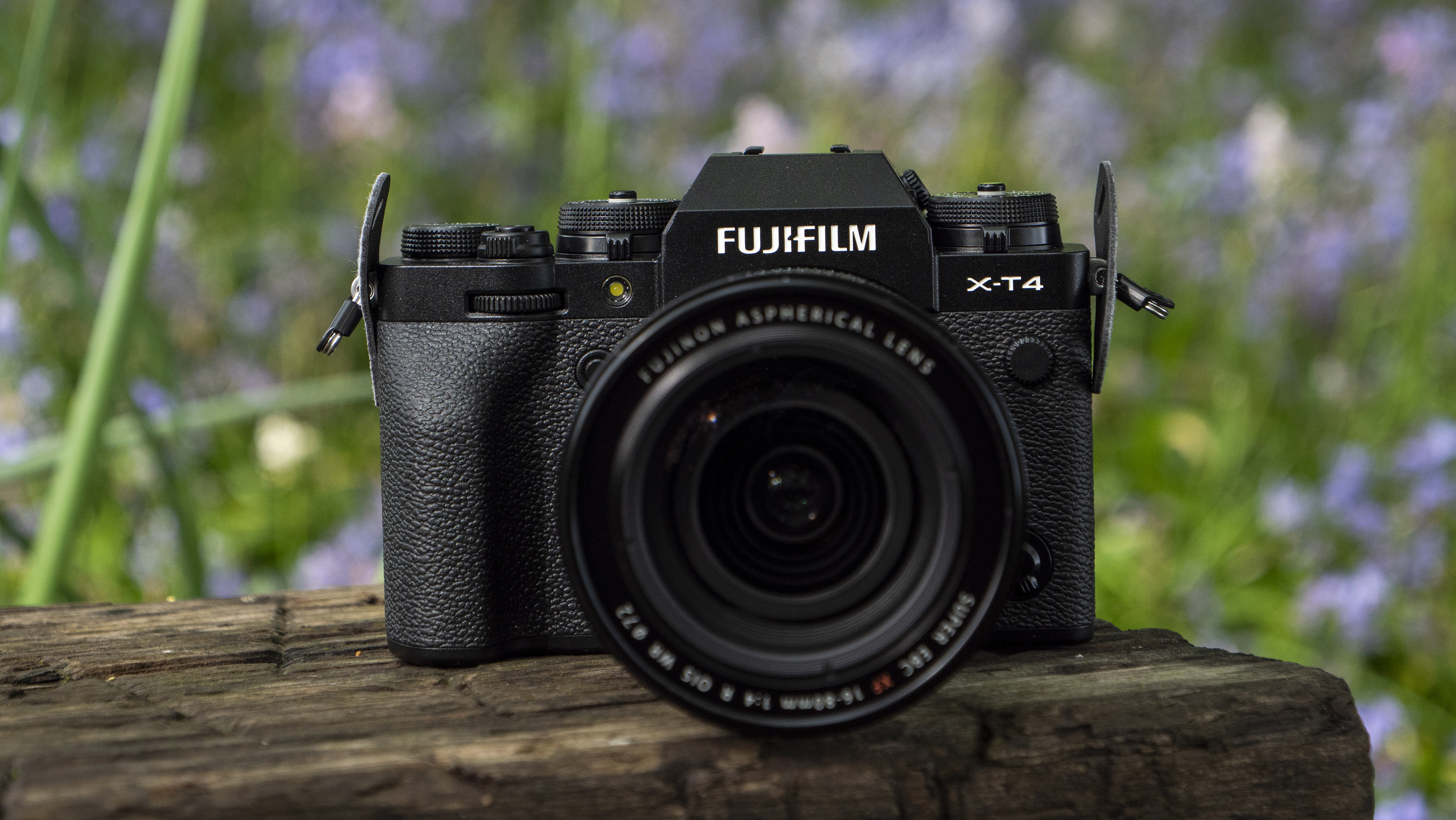
If video quality is your priority, then it's hard to beat the Fujifilm X-T4 as a vlogging all-rounder. Sure, some full-frame cameras can still edge it for dynamic range and high ISO performance, but it's not a huge gap and the X-T4 offers a smaller overall setup that's ideal for travel. One of the best hybrid shooters around, the X-T4 brings significant upgrades on the X-T3 that include in-body image stabilization (IBIS), a bigger battery and improved autofocus.
The latter is quick and reliable for both stills and video, though you'll preferably want to use it with some of Fujifilm's more recent glass, like the XF16-80mm f4 R OIS, for the best results. With a microphone input, front-facing screen, weather-sealing and the ability to shoot Cinema 4K videos up to 60fps, the X-T4 is a great all-round vlogging option for those who want a camera that can take care of both their stills and video needs.
- Read our in-depth Fujifilm X-T4 review

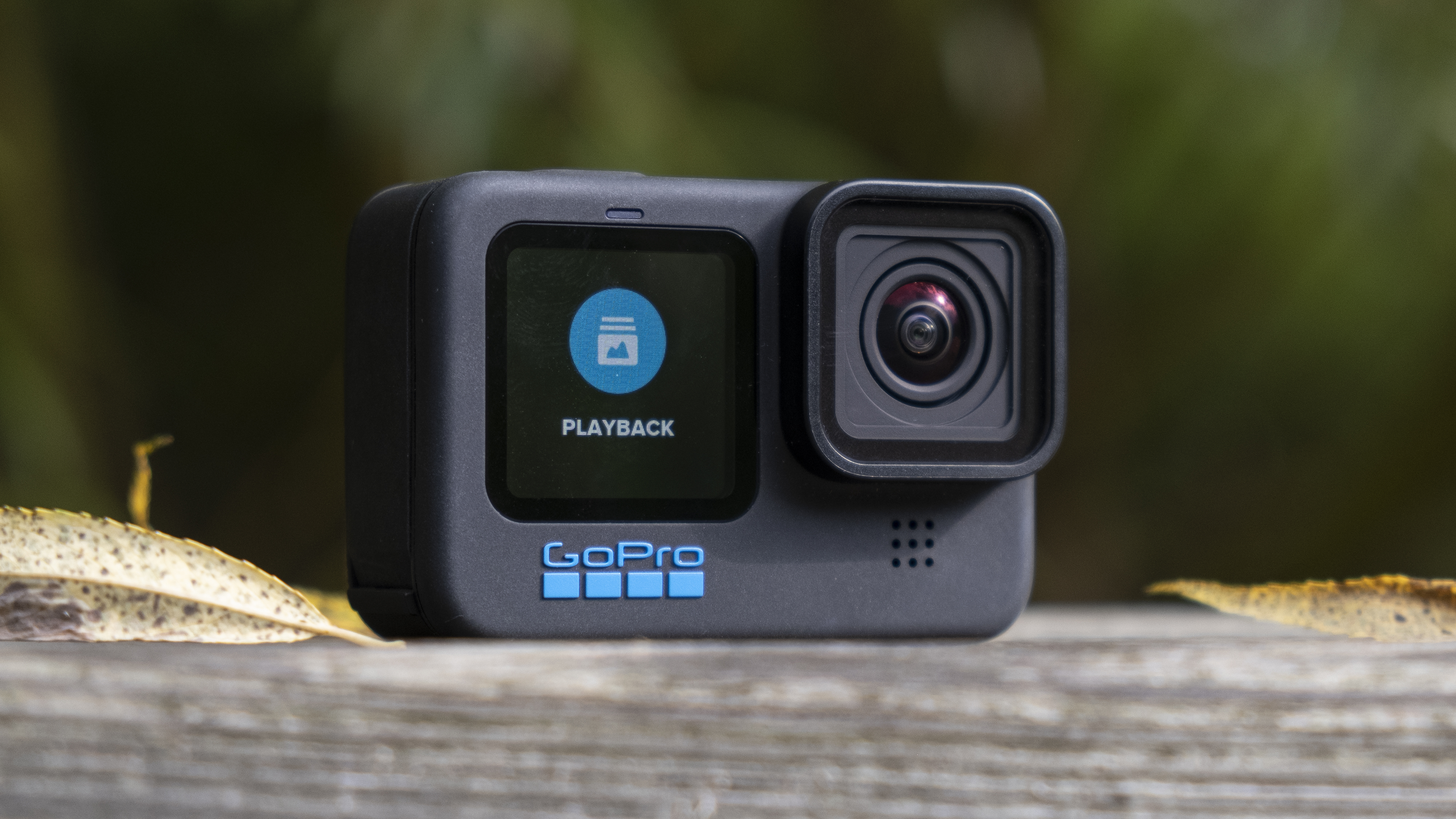
With the same small sensor, screens and shell as the GoPro Hero 9 Black before it, the Hero 10 Black doesn’t reinvent the action camera. But it does offer a more refined experience than its predecessor, making it the most versatile action cam available to adventurous vloggers. A snappier touchscreen interface and menu system make it much easier to use, while the new GP2 processor ensures polished performance. The chip boots 5K frame rates to 60p for slicker vlogs, while 4K at up to 120fps unlocks sharper slow-mo footage for captivating cut scenes.
Stabilization gets an upgrade too, with HyperSmooth 4.0 and horizon leveling on-board for supremely steady footage (even if you’re swaying at angles of 45 degrees). Live-streaming is still subject to some limitations (YouTubers need at least 1,000 subs) but you can now stream with HyperSmooth 4.0 enabled. Add a hydrophobic lens cover to its established endurance skills and the GoPro Hero 10 Black becomes the clear winner if you need top-notch video in tricky conditions – even if budget rivals offer better value.
- Read our in-depth GoPro Hero 10 Black review

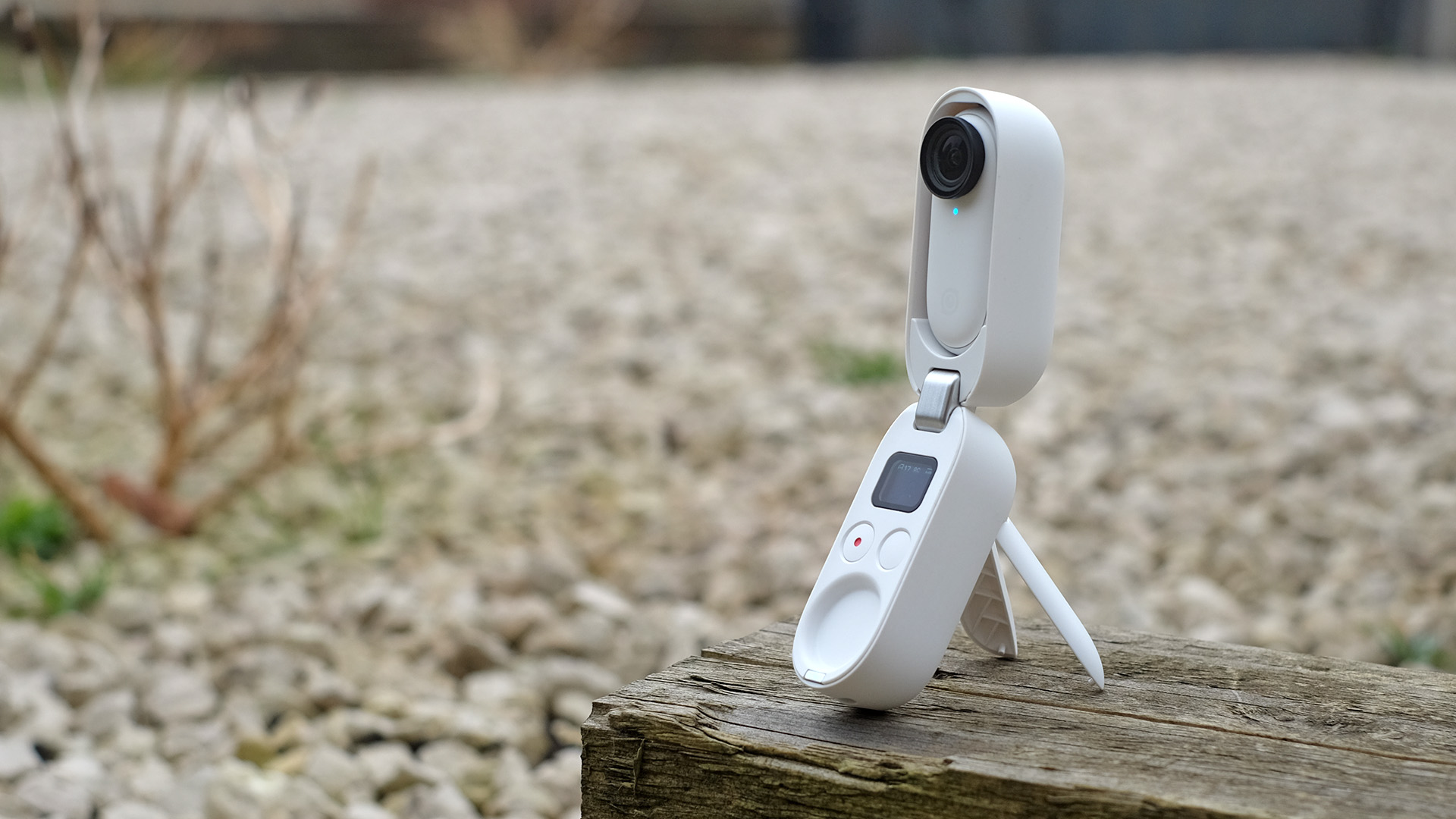
Few cameras offer the vlogging portability of the Insta360 Go 2. Hitting the scales at a mere 26.5g, the camera itself is a tiny, pared-back pebble that’s capable of capturing detailed and dynamic 1440p footage at up to 50fps. Stabilization isn’t up to GoPro standards, but the FlowState software does a reasonable job of mitigating walking motion, especially if you process video with your laptop rather than the Insta360 app. There’s no display on the camera itself, which will be a dealbreaker for some, but the app can be used for a wireless video preview.
More useful, though, is the protective charging case: home to two buttons and an OLED readout, the controls and camera face the user when the Insta360 Go 2 is docked, making it an ideal handheld vlogging setup. The case also features fold-out legs for tripod duties and works as a remote for wireless camera control. At 30 minutes, battery life isn’t the best, but with a single microphone that renders vocals with decent punch and clarity, the Insta360 Go 2 is an easy, properly pocketable option for recording quick clips and vlogs on the go.
- Read our in-depth Insta360 Go 2 review

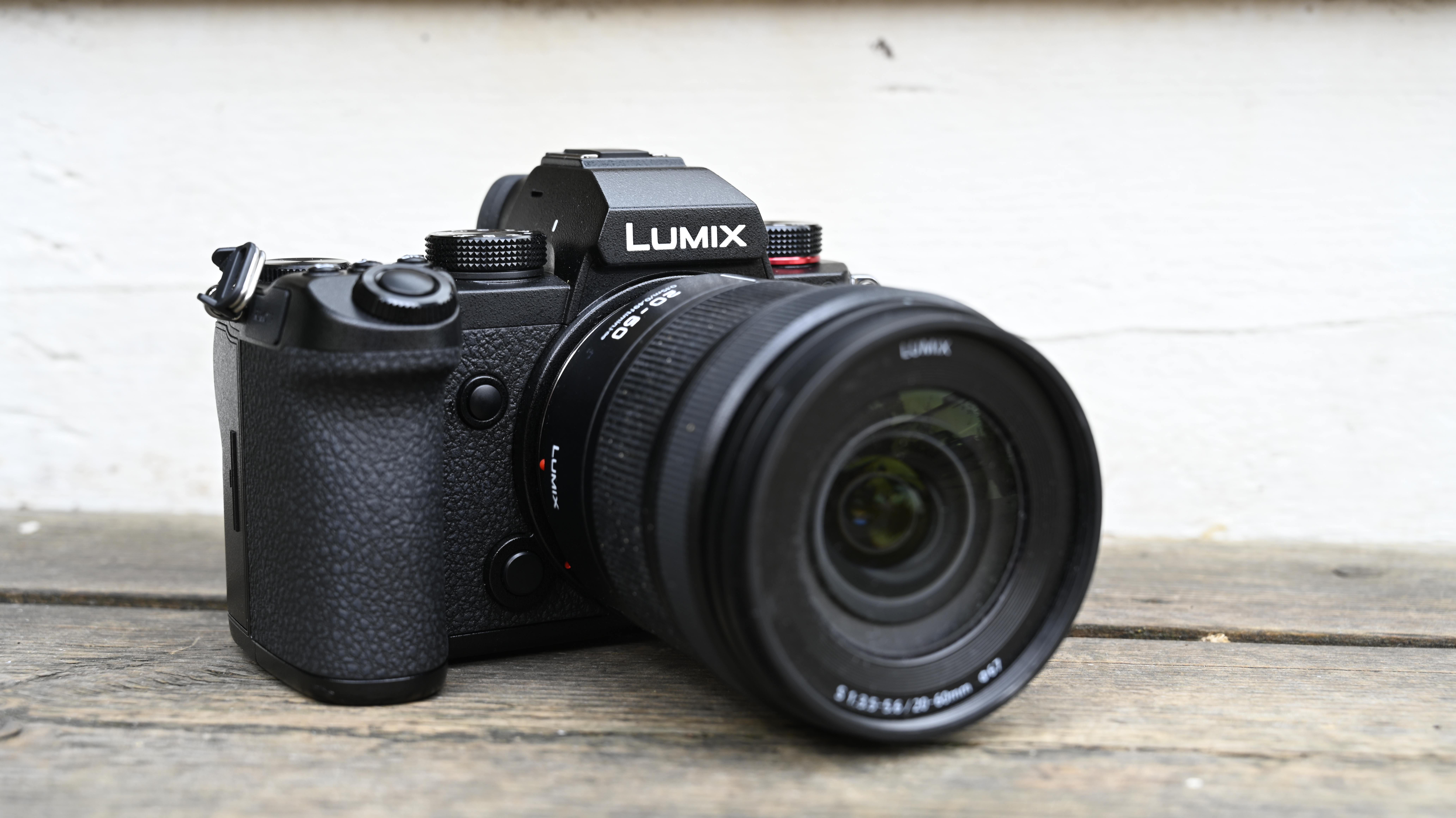
Offering full-frame performance in a Micro Four Thirds body, the Panasonic Lumix S5 is a fantastic hybrid that should appeal to a wide variety of creators.
Smaller and lighter than the GH5 yet equipped with a full-frame mirrorless sensor, the Lumix S5 sits extremely comfortably in the hand and features a comprehensive array of buttons and dials. And vloggers will welcome the arrival of a fully articulating touchscreen which can flip out to face forwards.
In fact, the S5 offers plenty to lure in video creators. It can capture 10-bit 4K internally, cropped 4K at 60p and uncropped 4K at 30p. It also supports V-Log, time-lapses, dual native ISO and anamorphic 4K. In-body image stabilization keeps things nice and smooth and, although the autofocus is still contrast-based, the AF-C setting is more than capable of following subjects while walking and talking.
The only real compromise – besides a 30-minute limit on 10-bit clips – is the inclusion of a Micro HDMI port, rather than a full-size one. And it might be worth considering a second battery if you’ll be recording all day. But with Wi-Fi and Bluetooth on-board, as well as a 20-60mm kit lens that’s ideal for video, the S5 should tick almost every box for vloggers.
- Read our in-depth Panasonic Lumix S5 review

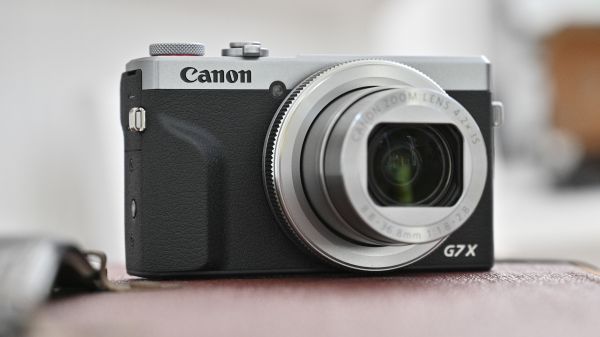
Long popular with vloggers, Canon’s G7X range has kicked it up a notch with the Mark III. There’s a very capable 20.1 megapixel one-inch sensor, but now it’s also equipped with uncropped 4K video recording, along with something that's been requested many times – a microphone socket.
This means you can elevate the sound above and beyond the internal mic’s offering, if you want to. Even better, the G7X III can stream directly to YouTube – which is, right now, an advantage over the Sony ZV-1 – so you can live vlog whatever’s happening around you, without having to downgrade to using your smartphone. USB charging is another great feature which means you can give it power bursts on the go – particularly prudent if you’ve been shooting a lot of 4K video.
The G7X Mark III's contrast detection-only AF and more limited tilting screen mean it's been nudged down this list by the Sony ZV-1, but it's also more affordable and is still well worth considering if you need a pocket vlogging rocket.
- Read our in-depth Canon PowerShot G7 X Mark III review

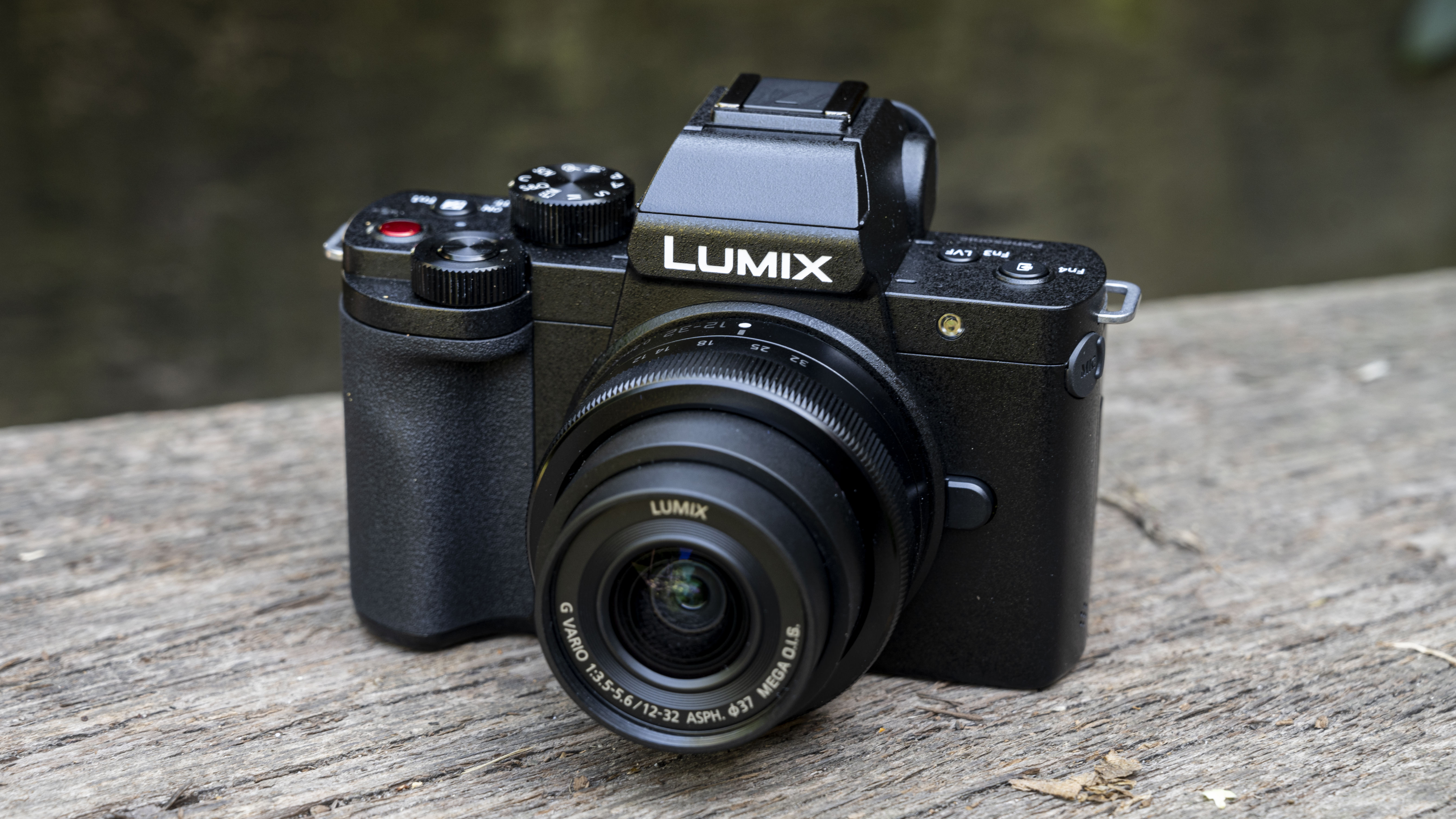
Touted by Panasonic as “the ultimate vlogging camera”, budding videographers are bound to love the G100’s compact form. Built small and light for portability, it’s the world’s smallest camera with an articulating touchscreen. And despite its size, the G100 is also packed with video-focused features.
As you’d expect, there’s 4K/30p video recording – albeit with a crop that limits its use as self-recording tool – as well as an arsenal of useful social media tools, including a video selfie mode, a sharing frame marker and a dedicated button for transferring footage to your smartphone.
Most significant, though, is the new audio system: a first on a mirrorless camera, Ozo Audio by Nokia uses three microphones to pick up sound wherever it’s coming from – including from behind – and it does an excellent job of prioritizing audio, even in noisy situations.
The 20.3MP sensor produces vibrant, detailed footage in most conditions, struggling only in low light. And, while image stabilization isn’t as smooth as you’d get with a gimbal, the five-axis hybrid system is still suitable for everyday recording. Add a real-world battery life of 40-45 minutes video shooting and you’ve got an attractive vlogging option.
- Read our in-depth Panasonic G100 review

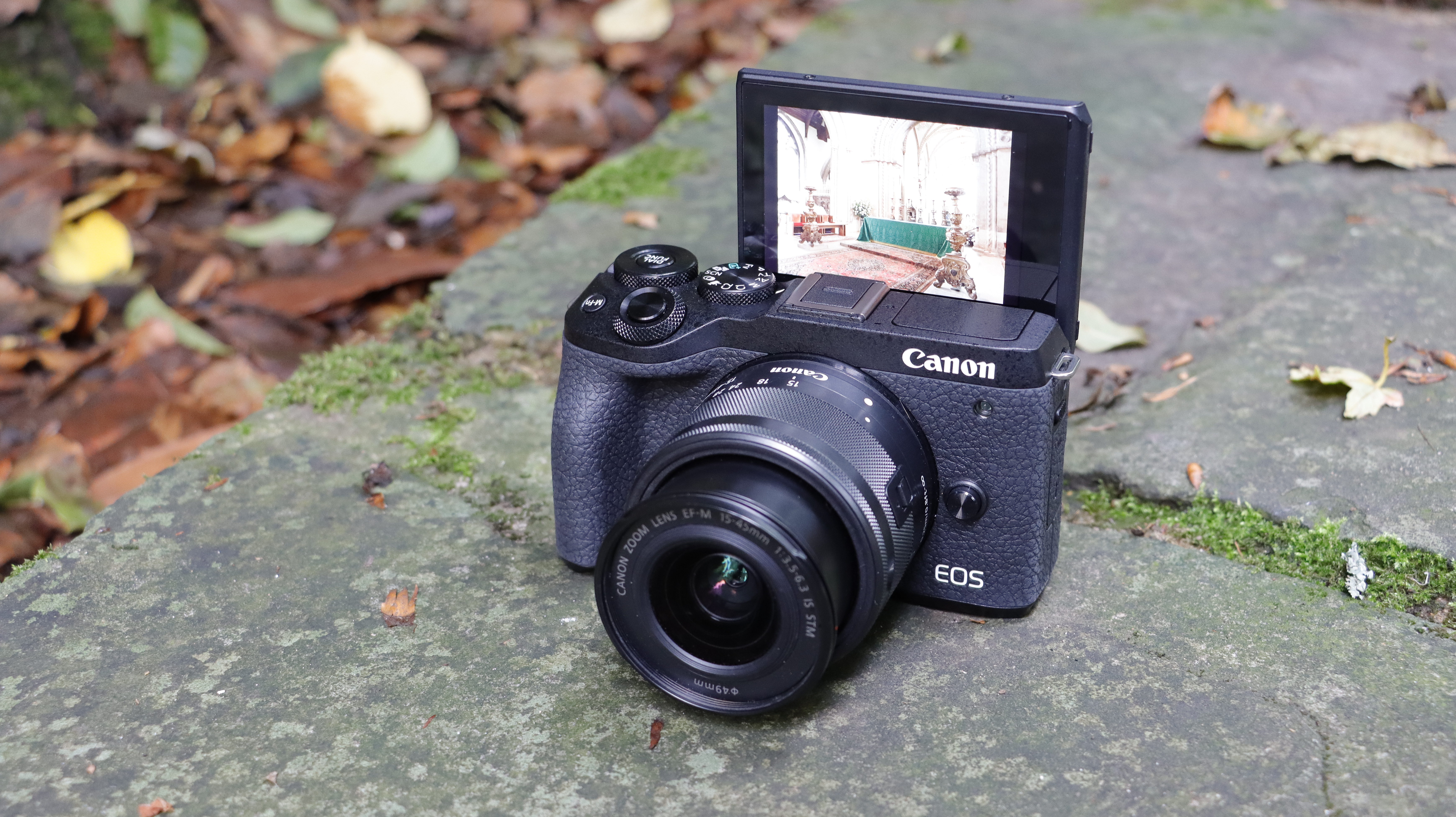
Canon really is the king of vlogging cameras, with several making our list thanks to a fantastic range of features and options. The Canon EOS Mark II is the latest iteration of its M series of compact system cameras, and is small and light enough to be a great travel companion.
However, in its miniature body, it’s housing the same high-resolution 32.5 megapixel sensor as the 90D DSLR (see below). With Dual Pixel CMOS AF and uncropped 4K video recording, it’s one you could use to kick your vlogs up a gear. There’s also a microphone input socket, plus a screen that faces all the way forward for perfect framing.
- Read our in-depth Canon EOS M6 Mark II review

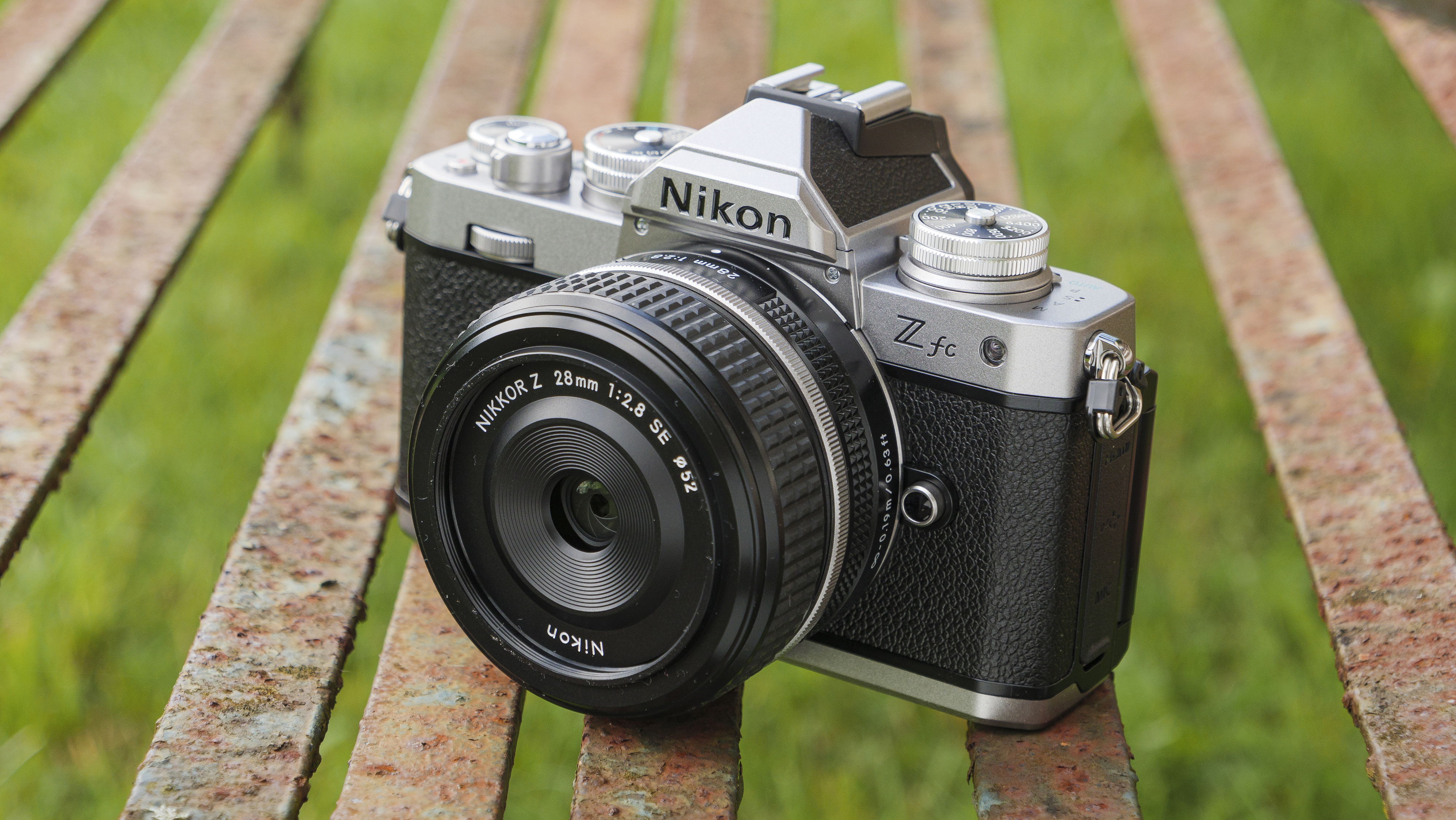
At its core, the Nikon Z fc is essentially identical to the Nikon Z50. That’s no bad thing: the Z50 is a marvelous mirrorless camera for vloggers. You get the same level of detail from the 20.9MP DX format APS-C sensor, the same 4K footage at 30fps and the same hybrid autofocus system. What’s fresh is the physical design. An homage to the 30-year-old Nikon FM2 (hence the ‘f’ for ‘fusion’ in the name), the Nikon Z fc adopts practically the same dimensions as its analogue ancestor – and an equally striking body. So there’s no shortage of throwback style, with stunning attention to detail.
But the improvements go beyond beauty: the Nikon Z fc ships with an inspired vari-angle touchscreen. Not only is this a boon for self-shooting vloggers, but it can also be flipped to hide completely, allowing you to shoot like it’s still 1984. Pair it with the Nikkor Z 28mm f/2.8 SE prime lens launched with it for the full retro effect and plenty of creative flexibility. The Nikon Z fc is surprisingly affordable too, especially for a camera with dedicated exposure, ISO and shutter speed dials.
- Read our in-depth Nikon Z fc review
Alternatively...
If you need a vlogging accessory for your computer, smartphone or aerial videos, these could fit the bill nicely...
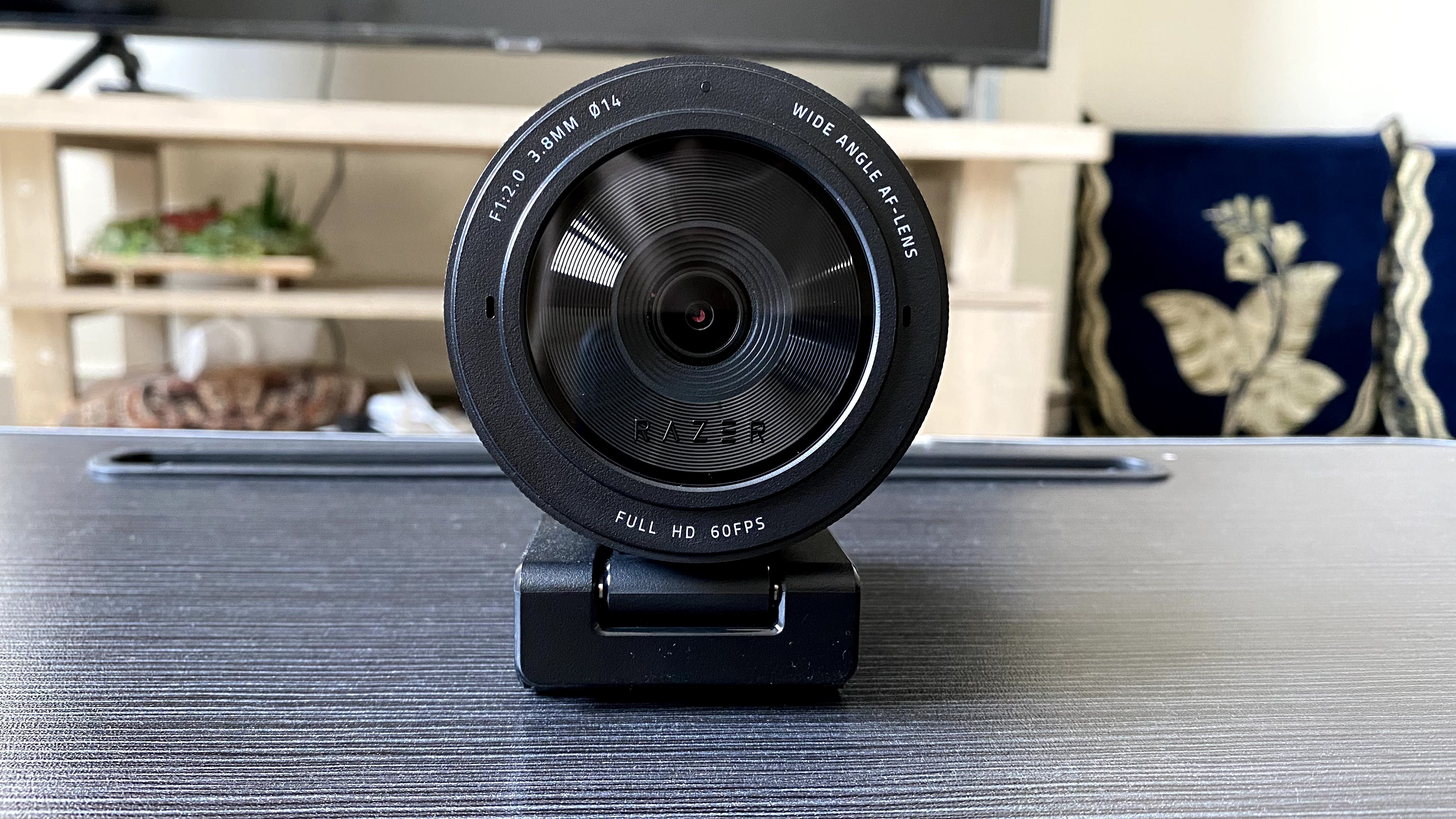
When is a webcam more than a webcam? When it’s a high-end recording option for serious streamers. Larger than your standard screen-top solution, the Kiyo Pro sizes up to accommodate a powerful sensor, plus the hardware required to capture footage at 60fps. Mimicking a DSLR lens – including an imitation zoom ring – the Kiyo Pro features no physical controls. Settings can be tweaked via Razer’s Synapse software, with three fields of view to pick between. The hinged clip mount keeps the Pro in a fixed position, but tripod support provides plenty of framing flexibility.
Although it lacks the integrated ring light seen on its standard sibling, the adaptive sensor does an excellent job of gathering light. Exposure is fantastic out of the box, while switching to HDR mode (which limits frame rate to 30fps) enhances the balance of highlights and shadows. Color correction can occasionally go haywire if your recording room features low ambient hues, but this is easily fixed by briefly shining a brighter light. For superlative frame rates and uncompromising quality, look no further.
- Read our in-depth Razer Kiyo Pro review

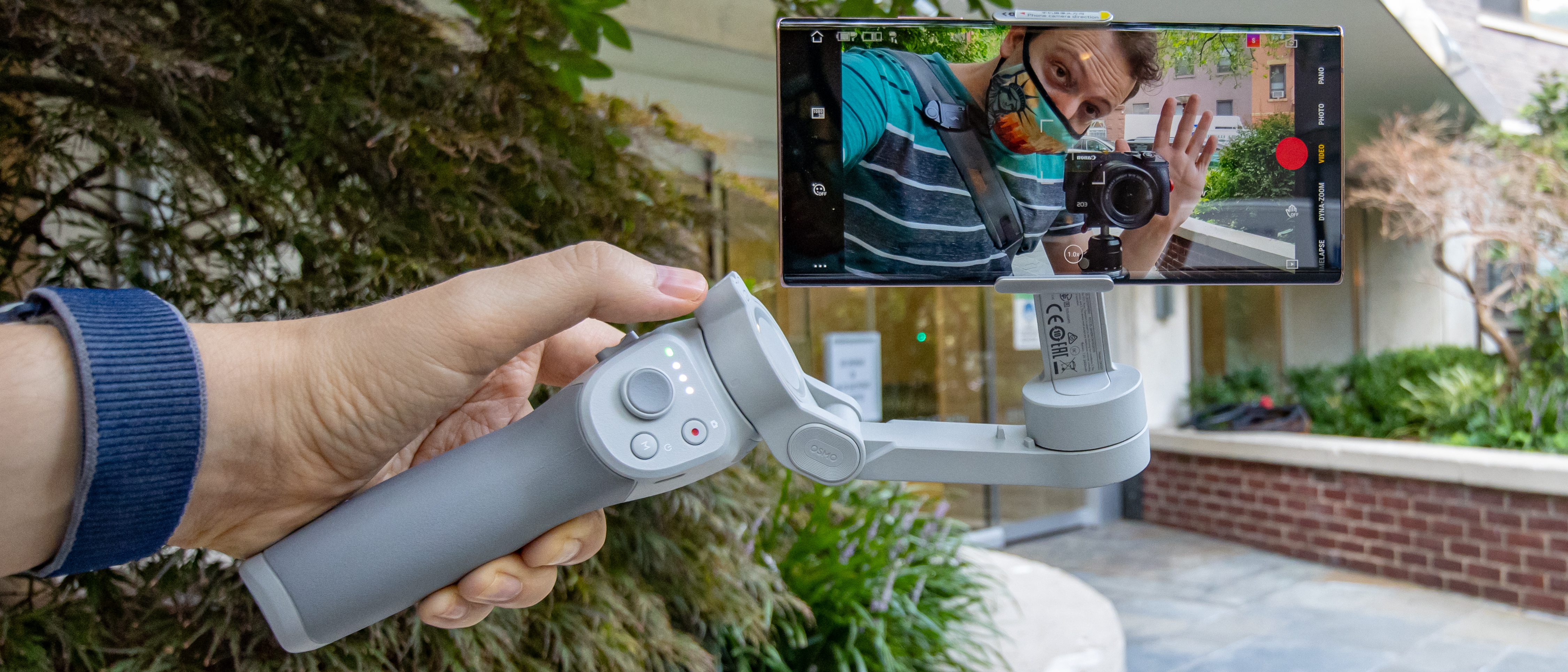
If you don’t want to invest in a dedicated camera for your vlogging, but you still want to take your footage up a notch, the DJI OM 4 is a great alternative option.
It uses a 3-axis gimbal to create smooth footage straight from your existing phone, simply by attaching it to the gimbal via magnets.
Other benefits include the ability to fold down the gimbal for easier transportation, quick release to allow you to use your phone for other things – such as making calls – without having to faff around too much with the set up.
It fits around most phones, including large models such as the Samsung Galaxy Note 20 Ultra, but it can struggle with thicker cases.
- Read our in-depth DJI OM 4 review

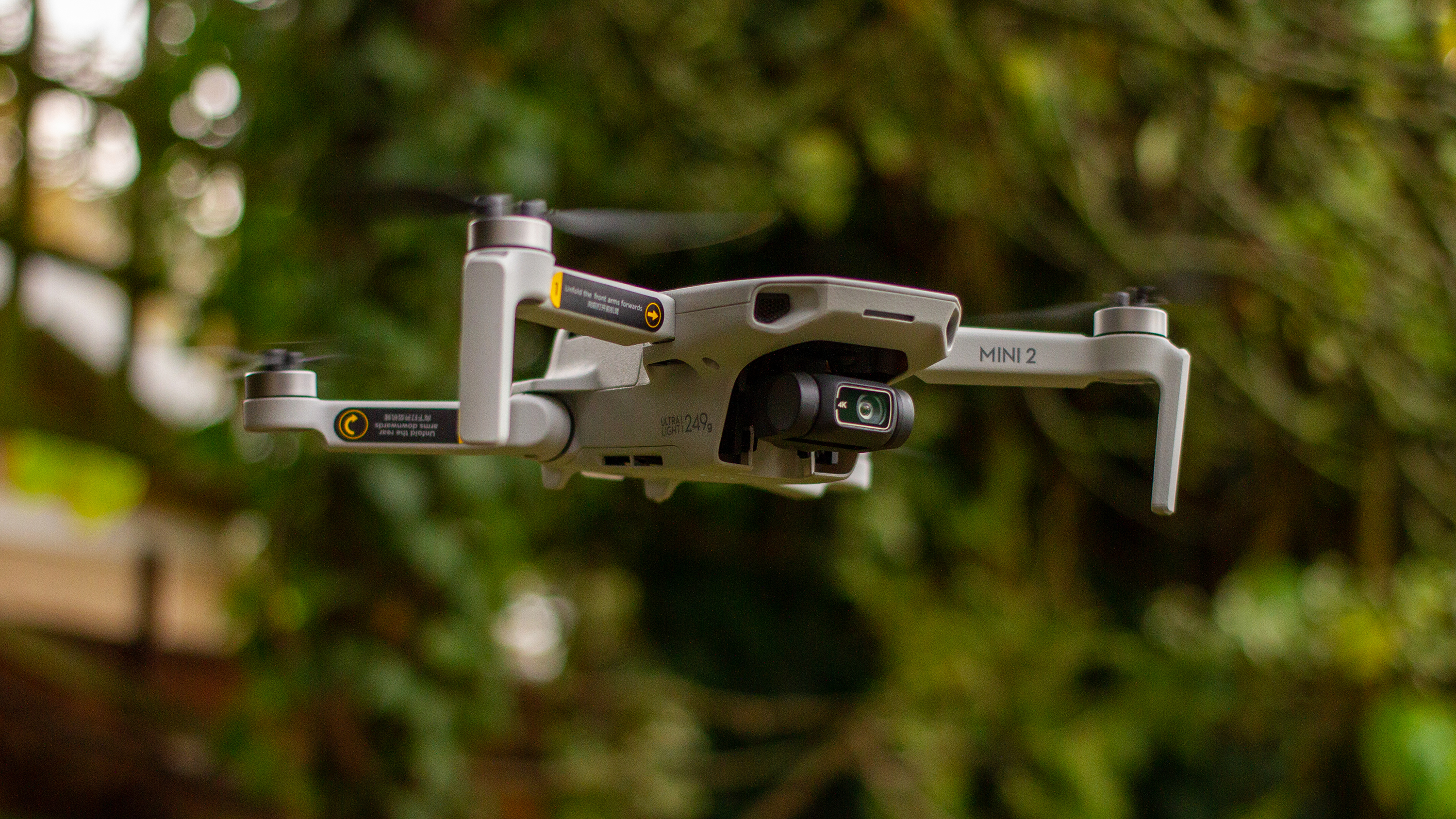
Sometimes, an aerial shot or cut-scene can really elevate your vlogs from fairly traditional videos to something a little more visually exciting. It's by no means essential for those starting out, but for more experienced shooters a travel drone can be a very handy ally – and the best drone for this is the tiny DJI Mini 2.
Despite being small enough to slip into a jacket pocket, this drone can shoot super-smooth 4K/30p footage and has a decent flight time of around 30 minutes. A word of warning: the Mini 2 doesn't have subject-tracking, so if you're looking for something that will, for example, automatically follow you as ride your bike, then you'll likely be better off with a drone like the DJI Air 2S (or the original DJI Mavic Mini combined with the third-party Litchi app).
But otherwise, the DJI Mini 2 is a brilliant little sidekick for your main vlogging camera – and won't take up too much more room in your backpack than an extra lens.
- Read our in-depth DJI Mini 2 review

What kind of camera do vloggers use?
As you can tell from the buying advice above, vloggers use a wide range of different cameras depending on their specific needs.
Many vloggers favor mirrorless models for their combination of image quality, performance and flexibility. The best mirrorless vlogging cameras feature high-resolution sensors, in-body image stabilization for smoother footage, plus the option to swap lenses to suit different shooting scenarios – all in packages that are relatively portable. Mirrorless cameras are also more likely to feature ports for connecting external accessories, such as microphones, headphones and hot-shoe lights.
That said, some vloggers prefer to prioritize portability. Truly tiny cameras like the Insta360 Go 2 sacrifice total creative control in favor of quick, simple accessibility for capturing off-the-cuff footage. Compact cameras like the Sony ZV-1 can represent a good middle ground for a lot of vloggers, offering solid image quality and manual control options, yet still in a form factor that can comfortably slip into a pocket.
Other vloggers choose cameras which are specifically suited to their shooting needs. Rugged models like the GoPro Hero 10 Black, for example, offer advanced connectivity and live-streaming options, plus plenty of creative modes, in a sturdy package that makes it easy to shoot vlogs even in extreme weather conditions.
Vloggers who stream from a seated position will often favor a premium webcam like the Razer Kiyo Pro, which deftly fills a unique niche. Equally, those who want a dedicated tool to record while they walk-and-talk might use something like DJI’s Pocket 2.
What video quality should you be looking for?
Whatever type of camera you go for, considering video quality will likely be top of your list. At the absolute minimum you’ll be looking to shoot in Full HD (1080p), while 4K is becoming increasingly common. Although the higher resolution format will take up more space on your hard drive, it should future-proof your captures a little more than Full HD.
Other specifications to pay attention to include built-in Wi-Fi for sharing your vlogs on the move, a fully articulating or tilting monitor for helping to frame your face, a built-in microphone socket for enhancing sound quality.
We’ve picked out 16 top cameras of various shapes, sizes and attributes to suit different styles of vlogging – as well as highlighting some that will fit into your all-round stills and video shooting requirements.
How we test vlogging cameras
The most important features for a vlogging camera are its video quality, autofocus, in-body image stabilization and audio options, so those are the main areas our tests focus on.
To review the video quality, we shoot at the camera's highest resolution and frame-rate in a variety of handheld scenes, including the popular walk-and-talk style, to see how it handles colors, skin tones, detail and rolling shutter. We also include high-contrast scenes to test how well the auto-exposure and white balance adapt to changes in lighting.
These tests are also a good opportunity to the test the vlogging camera's Face and Eye tracking autofocus, along with the quality of its stabilization (both electronic and mechanical, if available). Another thing we test in these scenes is an oft-overlooked part of the vlogging equation, the built-in microphones. If the camera has a microphone input, we'll also use it with an external lav mic to see how the quality compares to its internal audio.
Many of the latest vlogging cameras include additional features like flat color profiles, articulating touchscreens, built-in ND filters and, in Sony's case, a 'product showcase' feature that's ideal for those who run a YouTube channel from home. If available, we test all of these functions to see how they fare compared to their closest rivals, then wrap up our conclusions based on our various impressions of the camera's build quality, design, video quality, audio quality and features.
- Best camera
- Best DSLR
- Best mirrorless camera
- Best 4K camera
- Best full-frame camera
- Best compact camera
- What camera should I buy?
- Mirrorless vs DSLR: 10 key differences
- Best travel tripod 2020: the 10 finest lightweight tripods for your camera
- These are the best compact cameras you can buy right now

from TechRadar - All the latest technology news https://ift.tt/2SKnCKX
0 comments:
Post a Comment